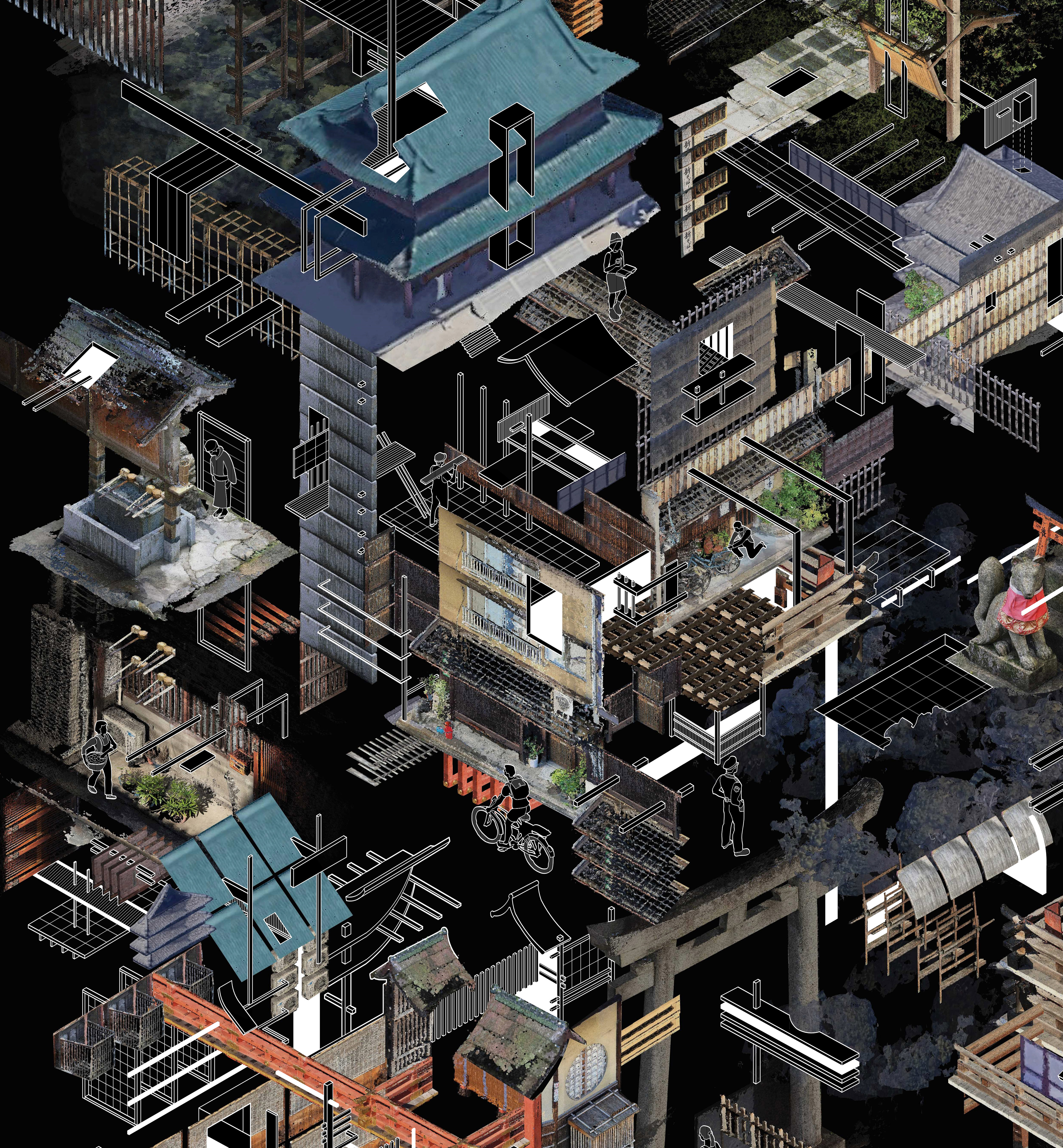DMJ – Devices of Dream-Like Precision: Tracing the Streets of Kyoto using Photogrammetry and Layered Drawing

There have been frequent attempts to represent the city of Kyoto as a coherent whole, from the cloud-swept panorama of the 17th-century Rakuchu Rakugai zu (Scenes In and Around Kyoto) folding screen paintings to the digital diorama of the GIS-driven Virtual Kyoto Project. Whilst these portraits of the city have relied on systems of representation that imply omniscience and accuracy, such images also present us with the limits of drawing, showing the impossibility of a form reproduction that is total. They simultaneously connote objectivity and irrationality and, in doing so, evoke an uncanny dreamlike world that is unbound, weightless and infinite.
Employing a layered drawing process that deploys techniques of architectural survey, such as photogrammetry and parallel projection, this investigation emphasises not the straightforwardly documentary capacity of such tools but rather their ability to re-author rather than replicate built space.

Photogrammetry is a form of 3D scanning that demands an author’s embodied presence in the actual site. Here, a sequence of methodically taken photographs—taken by adjusting the position of the apparatus and moving around the subject—is fed into a computer that rebuilds the space as a 3D ‘point cloud’ model. In doing so, the author is tracing the actual site, using both their camera and their body to inhabit a place while directing their gaze towards it. Traces are not clones—they are new versions of a reality that have a generative, rather than passive, capacity to redefine, select, highlight and omit information.
The investigation produces a contemporary urban portrait of Kyoto, drawing upon the history of attempts to capture the city. It uses a combination of digital tracings of the city, conducted during multiple visits to Kyoto between 2017 and 2023, and remote virtual surveys via Google Earth.
The project regards reproductions of images and drawings produced as sites in and of themselves, inviting subsequent tracings and re-inhabitations. It considers the possibility that the representational devices of precision and accuracy might be freed from the obligation to map the physical reality of the city and instead build an alternative version of it, which may have more in common with how we envision and imagine—or how we dream—of these places.

Download the full article as a printable PDF
DMJournal–Architecture and Representation
No. 2: Drawing Instruments/Instrumental Drawings
Edited by Mark Dorrian and Paul Emmons
ISSN 2753-5010 (Online)
ISBN 978-1-9161522-4-3
About the author
Sayan Skandarajah is a Lecturer at the School of Architecture in Reading whose design research focuses on drawing-led methodologies. His role involves leading design studios and running a range of modules that deal with architectural representation and reflective model-making. His PhD research, conducted at the Bartlett School of Architecture, engages with non-Western forms of urban representation, such as those found in traditional Yamoto-e-style Japanese painting. Alongside Kirsty Badenoch, he is co-curator of the Cartographies of the Imagination project, an ongoing research collaboration that has produced exhibitions, drawing workshops, academic forums and a publication released in 2021.
Click here to receive updates about the journal, and future calls for abstracts.
